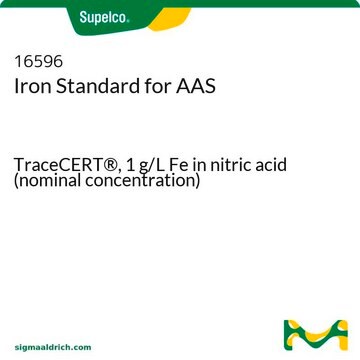27602
Caffeina
anhydrous, tested according to Ph. Eur.
Sinonimo/i:
1,3,7-trimetilxantina
About This Item
Prodotti consigliati
Grado
anhydrous
Livello qualitativo
agenzia
EPA 1694
USP/NF
tested according to Ph. Eur.
Forma fisica
powder
Punto di fusione
234-236.5 °C (lit.)
Solubilità
H2O: soluble 18.7 g/L at 16 °C
applicazioni
environmental
Stringa SMILE
CN1C(=O)N(C)c2ncn(C)c2C1=O
InChI
1S/C8H10N4O2/c1-10-4-9-6-5(10)7(13)12(3)8(14)11(6)2/h4H,1-3H3
RYYVLZVUVIJVGH-UHFFFAOYSA-N
Informazioni sul gene
human ... ADORA1(134) , ADORA2A(135) , ADORA2B(136) , ADORA3(140) , PDE4B(5142)
mouse ... Adora2b(11541)
rat ... Adora1(29290) , Adora2a(25369)
Cerchi prodotti simili? Visita Guida al confronto tra prodotti
Applicazioni
Azioni biochim/fisiol
Avvertenze
Warning
Indicazioni di pericolo
Consigli di prudenza
Classi di pericolo
Acute Tox. 4 Oral
Codice della classe di stoccaggio
11 - Combustible Solids
Classe di pericolosità dell'acqua (WGK)
WGK 1
Dispositivi di protezione individuale
dust mask type N95 (US), Eyeshields, Faceshields, Gloves
Choose from one of the most recent versions:
Possiedi già questo prodotto?
I documenti relativi ai prodotti acquistati recentemente sono disponibili nell’Archivio dei documenti.
I clienti hanno visto anche
Il team dei nostri ricercatori vanta grande esperienza in tutte le aree della ricerca quali Life Science, scienza dei materiali, sintesi chimica, cromatografia, discipline analitiche, ecc..
Contatta l'Assistenza Tecnica.




